This is the easiest bread recipe ever and is great for beginners. And even if you’re an experienced baker, you’ll make it all the time because it’s good, not just easy.

This rises easily and uses very few ingredients. If you knead it in the bread machine or stand mixer, there is very little hands-on time, just rising time.
Table of Contents
What You’ll Need
- 4 cups bread flour All-purpose flour can be used in a pinch, but bread flour gives better structure and chew.
- 2 teaspoons salt
- 2½ teaspoons instant yeast (SAF brand recommended) active dry is okay too but will be a little slower
- 1½ cups water
- Pinch of cornmeal (Used for sprinkling on parchment to prevent sticking)
Instructions
Step One: Combine all ingredients and knead
Combine all ingredients. There’s no need to proof yeast or wait for it to foam. If you’re using instant yeast, just dump it in with everything else.
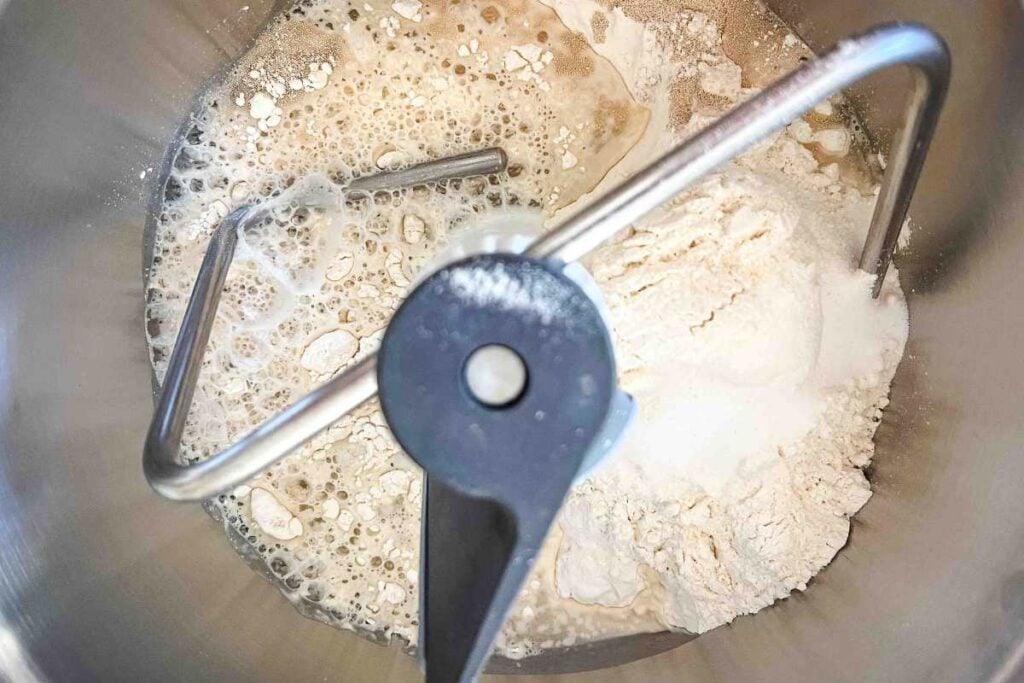
- Bread machine: Add everything to the bucket and set on the dough cycle.
- Stand mixer: Add ingredients to the bowl, fit with the dough hook, and knead on low.
- By hand: Knead until smooth (a bit tedious, but works fine).

After a few minutes of kneading, evaluate the dough. It should form a ball and pull away cleanly from the sides of the bowl. If it’s sticky, add flour a teaspoon at a time. If it’s dry, add water a teaspoon at a time.
When the dough forms “windowpanes” when stretched, it’s ready.
Step Two: The First Rise
Shape the dough into a ball, place it in a lightly oiled bowl, cover with a damp towel, and let rise in a warm place for about 1 hour.

Don’t overthink the shaping, you’re just forming a ball. And don’t be married to the rising time. Watch the dough, not the clock. It should look like the picture above before moving on.
Step Three: Shape and Rise Again
Line the Dutch oven with parchment paper. Shape the risen dough into a ball, place on the parchment, dust with flour, and slash an “X” on top.
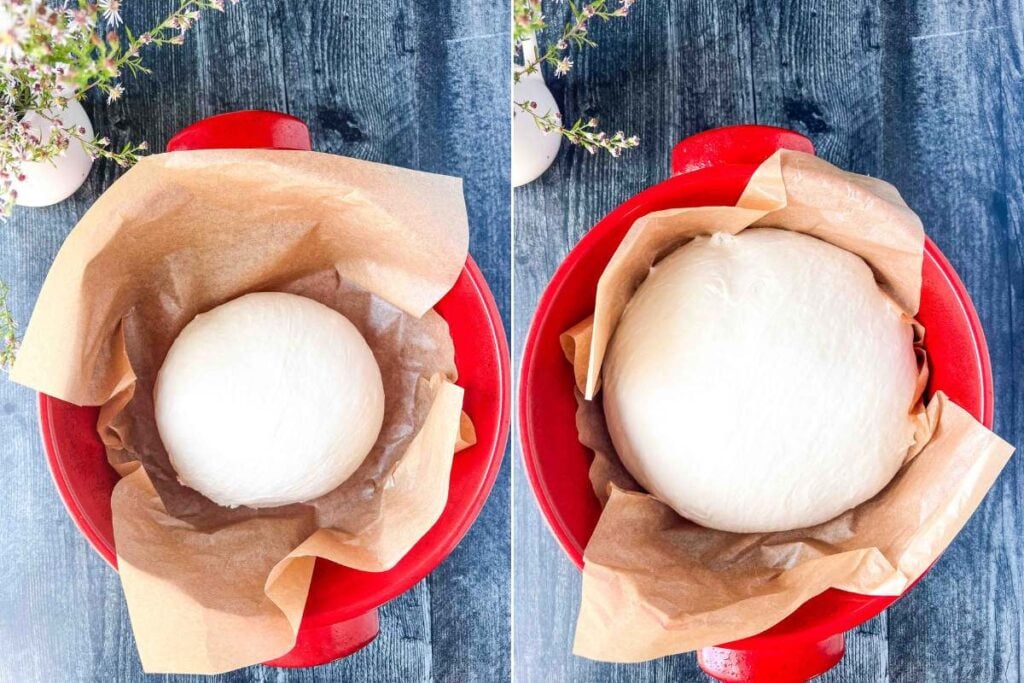
Cover with the lid and let it rise again for about 45 minutes. Towards the end of the rise, preheat the oven to 450°F.
Step Four: Bake
Once the dough is puffy, prep it for baking by flouring the top and making a few slashes. This is just for looks so do it however you’d like.
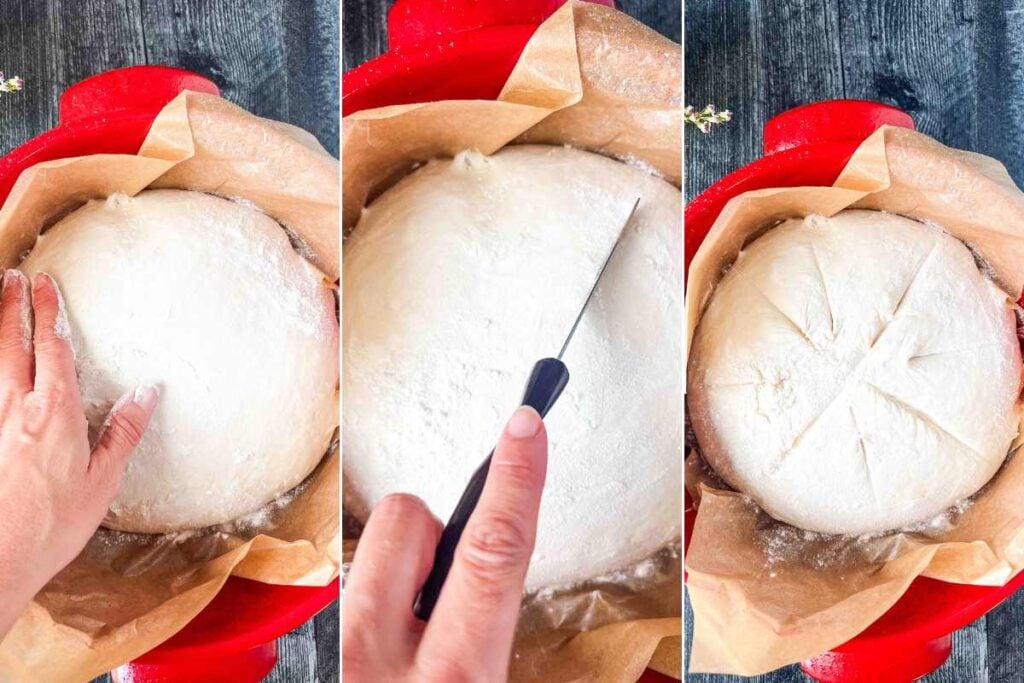
Bake for 20 minutes with the lid on and 20 minutes with it off, until golden brown.
A finished loaf will feel light for its size and be about 200 degrees in the center.

Cool on a wire rack before slicing.
Storage Instructions
Once cooled, store in a bag or container on the counter for 1–2 days. For longer storage, you can freeze any leftover slices and toast them from frozen or defrost at room temp.
Printable Recipe
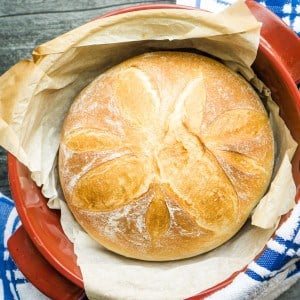
French Bread in a Dutch Oven
Equipment
Ingredients
- 4 cups bread flour
- 2 teaspoons salt
- 2½ teaspoons instant yeast (SAF brand recommended)
- 1½ cups water
- pinch cornmeal (for sprinkling on the parchment)
Save This Recipe
You'll join my email list which you will love. And if you don't, unsubscribe in one click. ❤️
Instructions
- Mix the dough. Combine the flour, salt, yeast, and water in a large mixing bowl or the bowl of a stand mixer. There’s no need to proof instant yeast—toss everything together. Then, mix until the dough clears the sides of the bowl but remains slightly sticky to the touch. If it’s too dry, add a tablespoon of water at a time. If it’s too wet, sprinkle in a bit of flour.
- Knead the dough. Knead by hand (15–20 minutes) or with a stand mixer (5–10 minutes). You’ll know it’s ready when the dough is smooth, elastic, and passes the windowpane test: stretch a small piece thin enough to see the light through it without tearing.
- First rise. Place the dough in a lightly oiled bowl and cover with plastic wrap or a clean towel. Let it rise in a warm, draft-free place for 60 minutes or until doubled in size.Tip: An oven warmed briefly (then turned off), or a sunny windowsill works well.
- Shape the loaf. Turn the risen dough onto a floured surface. Gently shape it into a round loaf by folding the edges under and pinching the bottom until the top is smooth. Then, line your Dutch oven with parchment paper and sprinkle a pinch of cornmeal on top. Place the loaf seam-side down on the parchment.
- Second rise. Cover the loaf with heavily greased plastic wrap or the lid of your Dutch oven. Let it rise for 45–60 minutes until it significantly puffs up. Preheat your oven to 450°F during the last 15 minutes of rising.
- Slash and flour. Dust the top of the dough lightly with flour for a rustic finish. Using a very sharp knife or bread lame, make three or four shallow slashes across the top. This helps the bread expand evenly in the oven.
- Bake. Place the Dutch oven in the preheated oven (with the lid on). Bake for 35–40 minutes total:First 20 minutes: Bake with the lid on to trap steam, which creates a crisp crust.Final 15–20 minutes: Remove the lid and bake until the loaf is golden brown and has an internal temperature of at least 190°F.
- Cool and serve. Remove the bread from the Dutch oven and cool on a wire rack. Let it cool for at least 20 minutes before slicing—if you can wait that long! Serve warm or at room temperature.
Notes
Nutrition


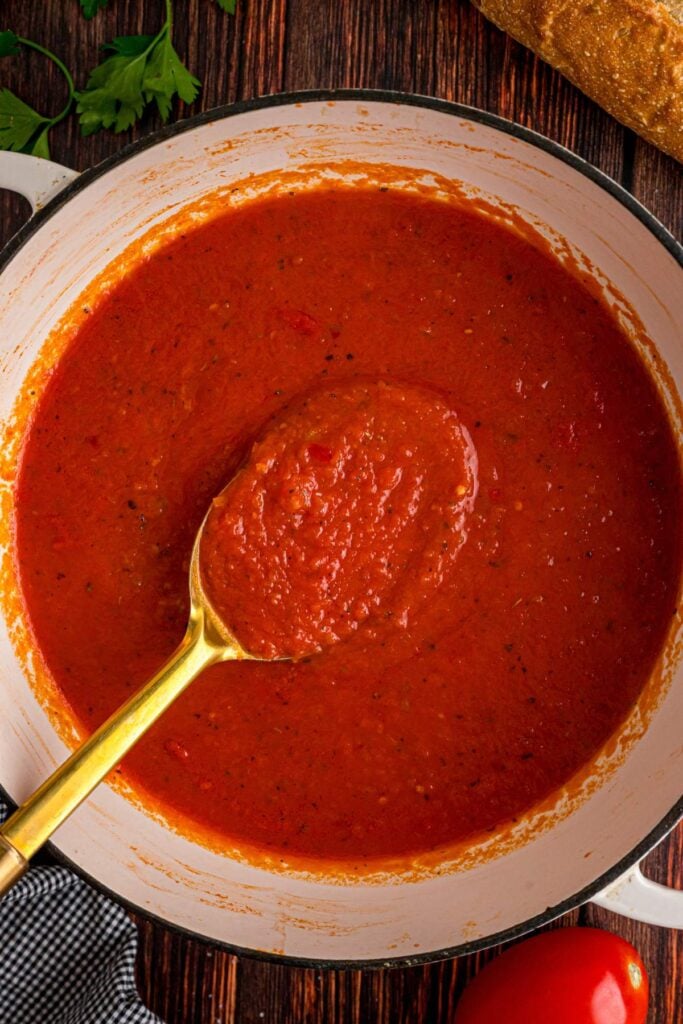
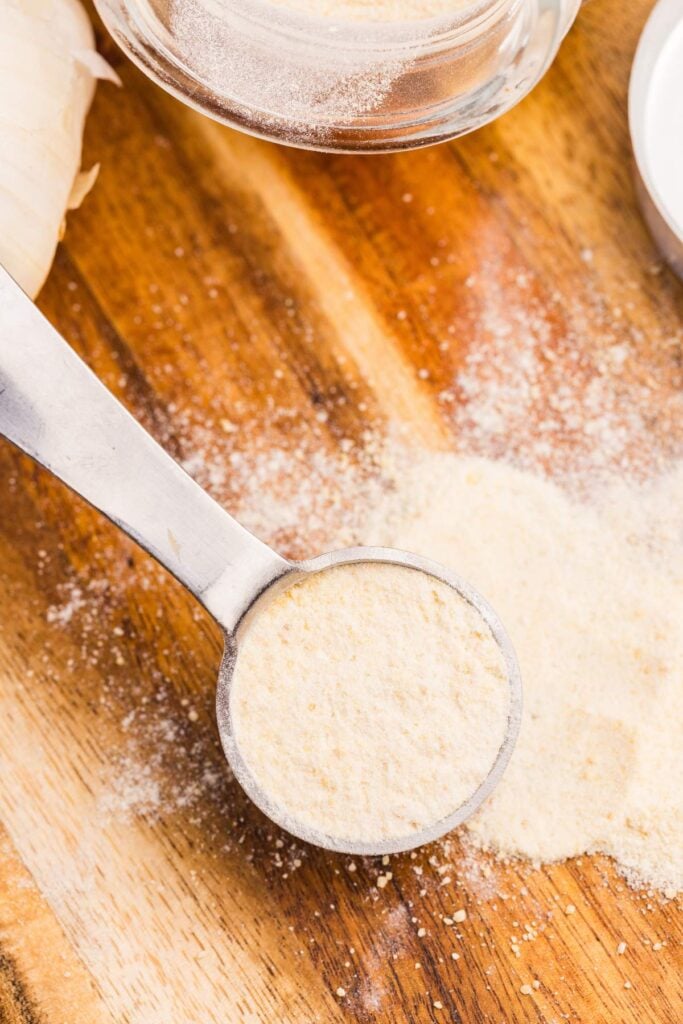
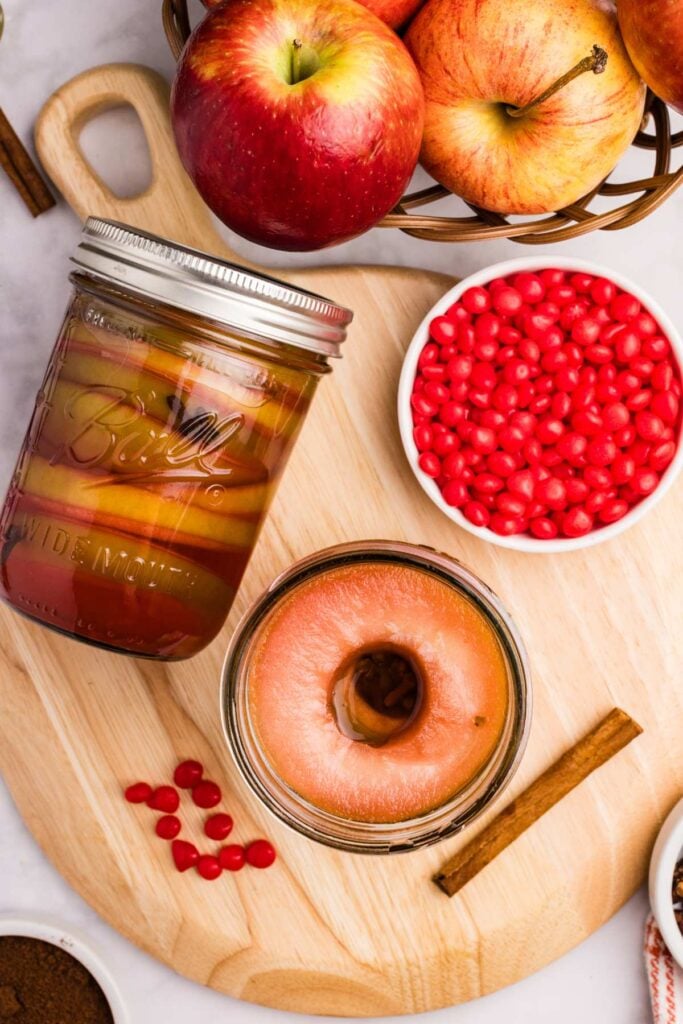
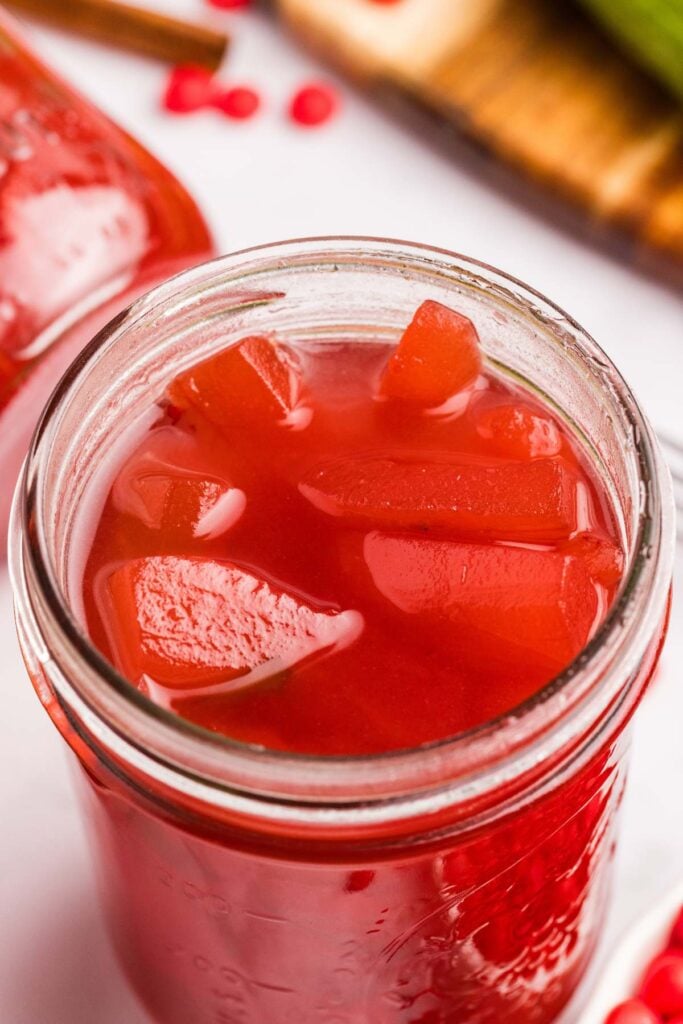
Easy and delicious.
S0 glad to hear it Elaine 🙂
Have made this bread twice now. It is so good. Easy to follow instructions. I will keep this recipe and use often.
Hey Jean, that’s wonderful to hear! I’m so glad you’re enjoying the recipe and finding the instructions easy to follow. Homemade bread is the best, isn’t it? Thank you for your kind words, and happy baking!
My husband loved the bread! He it toasted for breakfast the next morning. Definitely making this again.
Hey Kim, that’s wonderful to hear! I’m so glad you and your husband enjoyed the bread. Toasting it for breakfast sounds like a great idea! Thank you for trying the recipe. I hope you make it again and love it just as much. Happy baking!
This recipe sounds very easy. Do you preheat the dutch oven before baking the bread?
Hey Paula, thank you so much. Yes, you CAN preheat the Dutch oven before baking the bread. This helps create a nice crispy crust! Just be careful when placing the dough inside since it will be very hot. However, I usually DON’T and it’s not necessary. Hope you enjoy the recipe! Let me know how it turns out!
I’m rather new to using my Kitchen Aid mixer.
Can you give me an idea of the speed setting for each of the steps?
I look forward to making this very soon.
Thanks
Sheree
hey Sheree! low! you can easier burn out the motor if you have it too high. if the dough feels really stiff and the mixer in straining, add a tiny bit more water. and if you feel it getting too hot, give it a 5 minute break 🙂
Tasted amazing and so easy to make
I’m so glad! thanks for letting me know!
This turned out great! Definitely beginner friendly. l used all purpose flour instead of bread flour and it still had a great texture. I had to knead the dough for a bit longer than stated but that’s not a big deal. Very informative, thank you!
Hey Tessie,
I’m so glad it worked out for you! Thank you for the kind words and for sharing your experience—it makes my day to hear this!
Everyone loved this bread, I added roasted garlic and it was amazing
Easy to make and tastes great! I brush the top with beaten egg and sprinkle with sesame seeds before making slash marks
great idea nancy! i love seeds on my bread too 🙂